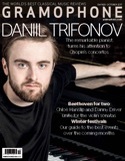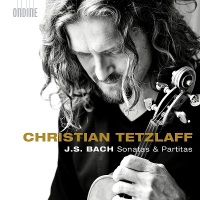Texte paru dans: / Appeared in: |
|
|
Outil de traduction (Très approximatif) |
|
|
Reviewer:
Rob Cowan
Of course, the archives are especially well stocked with personalised solo Bach, from the young Menuhin to Telmányi, Martzy, Heifetz, Milstein and beyond (speaking only of complete cycles), so while adhering to aspects of modern scholarship, Tetzlaff’s individual voice is a welcome throwback. Not that you’ll hear various conventions that Tetzlaff has ‘increasingly rid himself of’ (to nearly quote him), such as uniform vibrato for almost all the notes. If you want evidence of this change of heart, compare the recording under review with Tetzlaff’s first set of solo Bach for Virgin (now on Erato), specifically the Sarabande from the D minor Partita, the older version more demonstrably vibrant, the later one relatively vibrato-free and more considerate of sonority and the shaping of chords. In his booklet note he makes the important point that various volume levels need to correspond to musical content. In general they do, except that in Teztlaff’s infinitely flexible new account of the Chaconne there is so much tonal and dynamic expressive incident going on – all of it fascinating to encounter on its own terms – that for the closing moments I miss the sense of an inevitable, majestic denouement. Viktoria Mullova is stronger on architecture, her tempo fairly steady so that any passing gestures (such as sul ponticello arpeggios, at 4'33" on her recording) are part of the journey rather than a momentary stopping-off point. In the C major Sonata’s Fugue, at the point where Bach cues an inversion, the effect should surely be something akin to ‘My God! What’s happening here? Bach is turning this elevated idea on its head!’ Here it merely happens, though Tetzlaff’s playing is exceptionally adroit, as are the various fast sonata finales. Part of the effect might be due to the fact that the arpeggiated writing just prior to the inversion is played with a striking degree of rhythmic freedom, more so than on the earlier version. Still, I’ll court potential criticism for being ‘non-PC’ by turning to
Heifetz in the
same passage, where you really do feel the shock of the new. In general I think
that with Tetzlaff in 2016 (when these superbly engineered recordings were made)
the Partitas come off better than the Sonatas, though everything spells the
skill of a master violinist on a roll. I’d recommend the set to pit against
other versions that you might already own, if only to question previous
convictions, always a good thing to do. |
|




